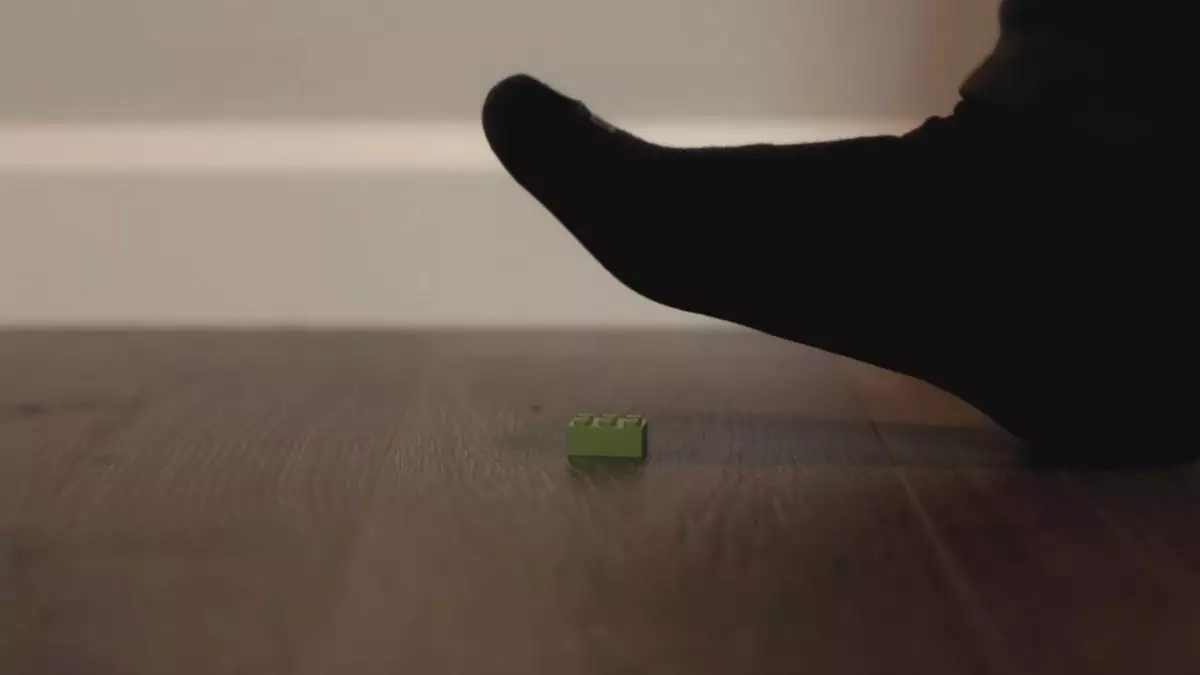In an age dominated by scientific inquiry and DIY enthusiasm, YouTuber Nate Scovill has embarked on an unusual quest: to uncover which Lego brick inflicts the most pain when stepped on. While most might shrug it off as trivial, the curiosity of stepping on tiny plastic blocks, known for their sharp edges and unforgiving shapes, drives Scovill to approach the question with a scientific lens. His video delves not only into the physical discomfort associated with these colorful toys but also into the playful side of pain that many parents and children navigate daily.
Scovill humorously acknowledges that the motivation behind his experiment is far from serious, yet his commitment to understanding the full degree of Lego-induced pain is palpable. He cleverly constructs a testing rig designed to simulate foot pressure without sacrificing his own dignity by placing his feet on camera. This aside about avoiding a future on Wikifeet enhances the charm of the video, providing viewers with glimpses of personality beyond mere scientific exploration.
Scovill’s method involves an innovative testing rig that mimics the weight of a human foot. The apparatus features a swift arm that descends onto various Lego blocks, equipped with cardboard squares to measure the resulting impact. Through this method, Scovill aims to quantify the “pain” inflicted by different Lego pieces. His experimental setup reflects a commitment to the scientific method, albeit with a lighthearted twist.
What is intriguing about the experimentation is the selection of Lego pieces used. Scovill initially showcases seemingly innocuous bricks, only to reveal surprising contenders like the wizard’s hat piece. The pointed structure and balanced base of this particular piece reveal an unexpected ability to penetrate the cardboard, suggesting that even the smallest and most whimsical elements of Lego can harbor hidden dangers.
In his pursuit of the most painful brick, Scovill encounters an old Lego wheel that he notes has since been discontinued due to its hazardous design. The metal axle protruding from the wheel serves as a cautionary tale about the evolution of toy safety standards. When inverted and subjected to weight, this piece causes damage to the test rig, drawing attention to the risks that accompany seemingly benign childhood toys.
To enhance the authenticity of his research, Scovill incorporates a foot molded from ballistics gel—a material also famously used in Mythbusters experiments. Unfortunately, this ambitious endeavor quickly spirals into chaos when the attachment used to secure the foot interferes with the intended results. Nevertheless, this moment serves as a reminder of the unpredictability inherent in scientific exploration. Despite the setback, the experiment ultimately reveals profound insights into the vulnerabilities of foot-shaped mechanisms against the treacherous edges of Lego.
While the primary focus of the video is to identify the most painful Lego brick, it also taps into a broader narrative surrounding childhood play and the hazards that can accompany it. Growing up, many can likely relate to the shrill yelp of pain that emerges from stepping on a rogue piece of Lego scattered across the living room floor. Scovill’s findings resonate with countless viewers who share a collective memory of navigating inevitable Lego landscapes.
Moreover, Scovill sheds light on other potentially hazardous household items often left scattered on the floor. For instance, he cheekily mentions the peril of stepping on an upturned UK plug—a common hazard that transcends the scope of toy-related pain. This humorously underscores a universal truth: many seemingly mundane objects in our environments can turn into instruments of discomfort.
Nate Scovill’s whimsical yet enlightening exploration into which Lego hurts the most invites viewers not only to consider the pain associated with these plastic building blocks but also to reflect on the broader implications of safety in children’s play. Through his engaging demonstration and humorous asides, he successfully transforms a seemingly trivial question into an informative and relatable spectacle.
Ultimately, Scovill’s investigative spirit and the playful nature of his endeavor serve as a reminder that science can be fun, and curiosity knows no bounds—even when it involves testing the limits of our tolerance for pain one Lego piece at a time. As viewers, we are left both entertained and educated, with a newly acquired respect for the toys that once filled our childhoods with joy—and occasionally, a twinge of pain.

